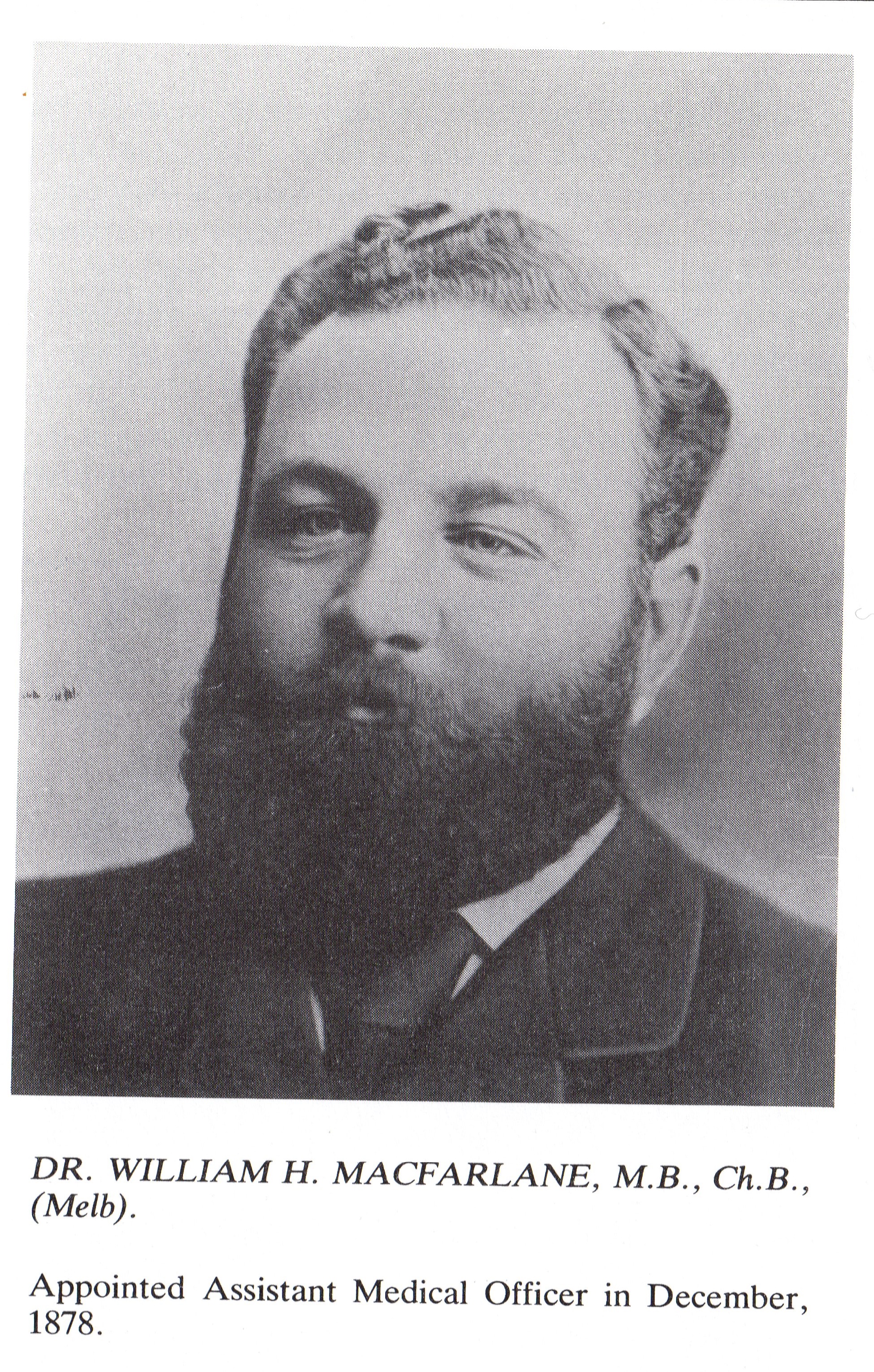During war years there are many changes, shortage of staff and the stopping of building programs. The first World War was no exce6ption. The planned recreational hall was drawn up and amounted to a cost of 1000 pounds, it was to be on the same site as the Administration Building and was to be a main hall of 90 feet by 60 feet with a stage of 20 feet by 60 feet and there were to be two clock rooms and a bio-scope platform, but the Government of the day decided against building while the country was at war. However extensions to the laundry and the additions of a new hydro-extractor, drying machine, washing machine and six-roller mangle were welcomed at the hospital. We also see the long serving Dr MacFarlane taken ill and being temporarily replaced. By 1915 Dr MacFarlane, after 34 years of service to the hospital died after “a short illness”.
A new Doctor was appointed as Superintendent, Dr E. Sydney Morris had a big job ahead. The defense Department wrote to the Hospital in 1915 and asked for “separate treatment, terms etc. for Returned Soldiers”. After each war the population of the hospital had a dramatic increase. Returning Soldiers, and families baring the stress and strain of having family away and being killed all added to the greater number of patients the hospital would have to cope with, often during difficult financial times.
The rise of admissions was evident during the First and Second World Wars and you can also see a rise between 1899-02 during Australia’s involvement in the Boer War.
“The war has somewhat depleted our staff, there being at present two clerks and ten attendants serving with the forces”, it was also noted in the report that the death of Private A. A. Anderson was recorded with great sadness. This wasn’t going to be the last sad news for the staff at the hospital, the war had only just begun. Dr Morris resigned and enlisted by 1918 and Dr Lalor from Victoria’s Kew Mental Hospital was to be appointed Acting Medical Superintendent.

